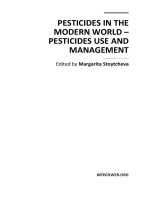- Trang chủ >>
- Khoa Học Tự Nhiên >>
- Vật lý
Modern world nations china
Bạn đang xem bản rút gọn của tài liệu. Xem và tải ngay bản đầy đủ của tài liệu tại đây (7.57 MB, 135 trang )
AfghAnistAn
rePuBliC of georgiA
PAKistAn
ArgentinA
gerMAny
PAnAMA
AustrAliA
ghAnA
Peru
AustriA
greeCe
guAteMAlA
the PhiliPPines
BAhrAin
BAnglAdesh
hondurAs
BelgiuM
iCelAnd
BerMudA
indiA
BoliviA
indonesiA
BosniA And
herzegovinA
irAn
irAq
sAudi ArABiA
BrAzil
irelAnd
sCotlAnd
CAnAdA
isrAel
senegAl
Chile
itAly
south AfriCA
ChinA
JAMAiCA
south KoreA
ColoMBiA
JAPAn
sPAin
CostA riCA
KAzAKhstAn
KenyA
sweden
CroAtiA
CuBA
KuwAit
deMoCrAtiC rePuBliC
of the Congo
MexiCo
doMiniCAn rePuBliC
the netherlAnds
egyPt
new zeAlAnd
englAnd
niCArAguA
the united stAtes
ethioPiA
nigeriA
uzBeKistAn
finlAnd
north KoreA
venezuelA
frAnCe
norwAy
vietnAM
nePAl
PolAnd
PortugAl
Puerto riCo
russiA
rwAndA
syriA
tAiwAn
thAilAnd
turKey
uKrAine
China
Second Edition
Gary T. Whiteford and Christopher L. Salter
Series Editor
Charles F. Gritzner
South Dakota State University
Frontispiece: Flag of China
Cover: The Pearl River in Shanghai, China
China, Second Edition
Copyright © 2010 by Infobase Publishing
All rights reserved. No part of this book may be reproduced or utilized in any form
or by any means, electronic or mechanical, including photocopying, recording, or by
any information storage or retrieval systems, without permission in writing from the
publisher. For information, contact:
Chelsea House
An imprint of Infobase Publishing
132 West 31st Street
New York NY 10001
Library of Congress Cataloging-in-Publication Data
Whiteford, Gary T., 1941–
China / Gary T. Whiteford and Christopher L. Salter. — 2nd ed.
p. cm. — (Modern world nations)
Includes bibliographical references and index.
ISBN 978-1-60413-621-0 (hardcover)
ISBN 978-1-4381-3237-2 (e-book)
1. China—Juvenile literature. I. Salter, Christopher L. II. Title.
DS706.W58 2010
951—dc22
2009043748
Chelsea House books are available at special discounts when purchased in bulk
quantities for businesses, associations, institutions, or sales promotions. Please call
our Special Sales Department in New York at (212) 967-8800 or (800) 322-8755.
You can find Chelsea House on the World Wide Web at
Text design by Takeshi Takahashi
Cover design by Alicia Post
Composition by EJB Publishing Services
Cover printed by Bang Printing, Brainerd MN
Book printed and bound by Bang Printing, Brainerd MN
Date printed: April 2010
Printed in the United States of America
10 9 8 7 6 5 4 3 2 1
This book is printed on acid-free paper.
All links and Web addresses were checked and verified to be correct at the time of
publication. Because of the dynamic nature of the Web, some addresses and links
may have changed since publication and may no longer be valid.
Table of Contents
1 Introducing China
8
2 Physical Landscapes
15
3 China Through the Centuries
34
4 People and Culture
51
5 Government and Politics
65
6 China’s Economy
74
7 Regional Contrasts
96
8 China Looks Ahead
111
Facts at a Glance
History at a Glance
Bibliography
Further Reading
Index
116
120
124
126
128
China
Second Edition
1
Introducing
China
C
hina, which is one of the world’s oldest continuous civilizations, has had some form of organized society since before
2000 b.c. The country has made significant contributions
in philosophy, religion, science, math, politics, agriculture, writing,
and the arts. With a population of about 1.35 billion and a land area
of 3.7 million square miles (9.6 million square kilometers), China
is not only a dominant regional power, but also a global one. The
popular image of China is one of large numbers of people using
tremendous energy and effort to transform the land. This process
is dramatically evident in the completion of the world’s largest
hydroelectric dam at the Three Gorges narrows of the Chang Jiang
(Yangtze River).
China is a rugged country, with mountains, hills, and plateaus
occupying about 65 percent of the total land area. The highest peak
in the world, Mount Everest, stands on the border between China
8
Introducing China
and Nepal. Unfortunately for the Chinese people, less than 15
percent of the land is farmable, compared with about 20 percent in the United States. Thus, the people of China, with less
than 7 percent of the world’s arable land, constantly work to
feed 22 percent of the world’s population.
China occupies a strategic position in Asia. It is situated on
the world’s largest landmass, Eurasia, with the largest ocean,
the Pacific, as its eastern border. Mainland China extends from
20° north to 53° north latitude, covering 2,300 miles (3,680
km). It stretches from 74° to 134° east longitude. This longitudinal distance of 3,230 miles (5,170 km) means that, when it
is noon in the east, it is only early morning in the far western
part of the country. China’s land boundaries total some 14,000
miles (22,000 km), and China shares national borders with 14
countries. It has an extensive coastline of 9,000 miles (14,500
km), which includes the territorial waters of the Bohai Gulf and
three neighboring seas—the Huang Hai (Yellow Sea), the Dong
Hai (East China Sea), and the Nan Hai (South China Sea).
The growth of civilization in China has centered on three
great river systems, all of which flow from west to east. The
northern quarter is drained by the Huang He (Yellow River),
which runs approximately 3,000 miles (4,700 km) from the
western territory of Tibet to its mouth in Shandong Province.
The middle half of the country is drained by the Chang Jiang
(Yangtze River), which also originates in Tibet. The Chang
Jiang is the longest river in China at 3,900 miles (6,300 km)
and has 10 times the water discharge of the Huang He. It is now
navigable by ship from Shanghai to the western inland city of
Chongqing, more than 900 miles (1,440 km) distant. More than
50 percent of China’s population lives in the Chang Jiang basin,
because it includes the richer and most productive land in the
country and receives adequate rainfall. The southern quarter of
China is dominated by the Xi Jiang (West River). It is the shortest of the three major rivers, flowing approximately 1,650 miles
(2,655 km) before merging with the Zhu Jiang (Pearl River) in
9
10
China
China has an area of 3.7 million square miles (9.6 million square
kilometers) and is only slightly smaller than the United States. Located
on the Eurasian landmass, China’s neighbors include Russia and
Mongolia to the north, Afghanistan and Kazakhstan to the west, Nepal
and India to the south, and the Pacific Ocean to the east.
Introducing China
the delta. The two vital cities of Guangzhou (formerly Canton)
and Hong Kong are situated at the mouth of this river.
These great river systems have been the cheapest and
most practical form of transportation in China and were a
critical source for irrigation and energy. The river valleys also
provided fertile alluvial soils for the surrounding level land.
Alluvial soils are stream-deposited material. As a result of
these factors, China’s population is concentrated along these
rivers and reaches its highest and most extensive density near
their mouths.
Central to any knowledge of China is an understanding
of the location and character of its people. Nine-tenths of the
population is of the Han ethnic group, and the remaining onetenth is divided among 55 other distinct ethnic groups. Traditionally, the Chinese family functioned as a unit and worked
the land by plowing, seeding, cultivating, and harvesting. The
peasant-agriculturist was the principal bearer of Chinese civilization. Therefore, Chinese history is tied to this continuously
productive, agrarian (rural) society. Hundreds of millions
of Chinese peasants still work the land. However, one of the
most notable changes in the last 25 years has been the increase
in the size and number of cities in China, as people move to
find work. Large cities help attract foreign investment, and the
country plans to expand hundreds of towns into new cities. By
2025, the urban population is expected to make up 55 percent
of the total population, up from the current 46 percent.
The Chinese people have long enjoyed strong traditions and
values. Confucius (551–479 b.c.), whose teachings and writings
have influenced Chinese thought for 2,500 years, was the source
of the Confucian Classics. These books functioned as the guide
for Chinese civilization, highlighting education and family as
the foundation of society. Other philosophies also took hold
in China. Taoists believed that people should renounce worldly
ambitions and turn to nature and the Tao—the eternal force
that permeates everything in nature. Buddhism became a very
11
12
China
As the Chinese economy continues to grow, Chinese citizens are
increasingly flocking to urban areas in search of jobs and a higher
standard of living. One of China’s most populous cities, Shanghai, has
18.8 million residents; by comparison, more than 8.36 million people
live in New York City. Above, people cross a busy street in Hong Kong.
powerful belief system for the Chinese. It provided a refuge in
the political chaos that followed the fall of the Han Dynasty
(206 b.c. to a.d. 220.). By the a.d. 400s, Buddhism was widely
Introducing China
embraced throughout China. Over the centuries, openness to
new ideas fostered the emergence of many Chinese inventions
and discoveries.
The government has always been characterized by some
form of central authority, dating as far back as the Xia Dynasty
of 2200 b.c. Subsequent dynasties reinforced cultural unity and
continuity for the Chinese civilization. One dynasty succeeded
another through warfare, with only occasional intrusion by
forces outside of China. The relative lack of outside contacts in early centuries allowed China to develop one culture
across many regions with a strong sense of national identity.
A series of emperors served as political leaders supported by
well-equipped armies. The Chinese people believed that their
emperors ruled by “A Mandate of Heaven.” These dynasties
continued over the centuries until the opening of China to the
West in the 1800s, with the eventual emergence of the Communist leadership and government in 1949.
China’s foreign and economic policies have taken significant twists and turns in the twentieth and twenty-first centuries. This is apparent in the admission of China to the World
Trade Organization (WTO) in December 2001 after some 15
years of negotiations. China’s entry into the WTO is generally regarded as a most significant event, equal in importance
to China’s being given a Security Council seat in the United
Nations in 1971. Furthermore, China and the Association of
Southeast Asian Nations established a free-trade area and a
regional trading bloc to begin in 2010, similar to those that
exist in Europe and the Americas. From 2004 to 2008, trade
volume between China and ASEAN nations doubled from just
over $100 billion to more than $200 billion.
China has seen sharp increases in tourism, trade, and foreign investment. Exports comprise 80 percent of China’s foreign currency exchange, and light industrial products like small
appliances, clothing, and footwear have overtaken agricultural
products in economic importance. This growth of China’s
13
14
China
economic strength translates into increased military strength.
Always a concern in such a picture is the claim that mainland
China makes for control of the offshore island of Taiwan. As
the government of Taiwan continues to ease restrictions on the
flow of money to the mainland, tensions may be reduced in this
tug-of-war between the small island democracy and the world’s
most populous marketplace and global factory floor.
This country with the world’s largest population also has a
wide range of natural resources, from fertile soils to forests to
fossil fuels and metals. Its human resources are enormous, and
its economic potential seems unlimited. China has a military of
some 3 million soldiers, with an additional 1.2 million reserves.
It has detonated nuclear bombs. The government has stated
that space exploration will become “as essential as electricity.”
In 2003, China launched its first astronaut (taikonaut), and in
2007, it launched its first unmanned lunar orbiter as part of its
space program.
It is important to learn as much about China as possible
and to better understand and appreciate its character from
every possible angle. It is a country whose history is unique and
defies the Western mind. In the coming decades, China is very
likely to continue in its role as one of the dominant world powers. It is vital, therefore, in today’s interrelated world, to know
all that one can about this remarkable country.
2
Physical
Landscapes
T
here are many ways to look at China’s landscape. It is important
to remember, however, that the natural and human landscapes
have been continually changing over the centuries. Well-known
geographer G.B. Cressey once remarked that the most significant element in the Chinese landscape is not the soil, vegetation, or climate,
but the people. In this very old land, one can scarcely find a place
untouched by humans. Large parts of China’s south and north are now
stripped of trees by human activity. Over a span of 80 centuries, Chinese culture and settlement have expanded from the original core area
in the middle Huang He to the nation’s present-day borders.
China’s natural landscapes have greatly affected its historical
development. Mountains comprise nearly one-third of China’s area,
and such rugged terrain has hindered cultural and ethnic blending for centuries. Besides the numerous high mountains, extensive
15
16
China
plateaus, rolling hills, inhospitable deserts, enclosed inland
basins, and extensive fertile low plains are found in China.
Such variety allowed the Chinese people to use the land in
many different ways.
One fundamental way to understand China’s natural landscapes is to divide the country into two regions—China Proper
(Inner China) and Frontier China (Outer China—Xijang, Qinghai, Xinjiang, Nei Mongol, Ningxia). The boundary marks a
contrast between a settled, frequently irrigated, and intensely
farmed area and a marginal dry-farming area supplemented
with agricultural enclaves, like the oases of the northwestern
deserts. One is a region of huge cities and settled villages based
on intensive agriculture, while the other is an area that features
animals grazing on the plateaus. It is in Frontier China that people like the Mongols, Kazaks, Tibetans, Uighurs, Manchus, and
other minority groups live. In contrast, overwhelming numbers
of Han Chinese live in China Proper. Just as sophisticated rice
culture helped shape the agricultural scene of the southeast
and the east, so the care of sheep, goats, camels, horses, and
cattle helped shape the nomadic lifestyles in the north and the
west. These peoples were not tied to the land, as their eastern
counterparts were. The two regions are roughly comparable in
size, but less than 5 percent of the population lives in Frontier
China. Two-thirds of China is only sparsely populated, making
the density of settled places even more pronounced.
China ProPer
China Proper (eastern China), a region of hills and plains,
encompasses the cultural, agricultural, population, and industrial core of the country. It is a gentle land of alluvial plains,
fertile river valleys, and rolling hills. It is this part of the country
that has been worn down by centuries of human occupancy
and activity. From the complex network of water channels in
this area, shipping routes were established that fostered coastal
development. China Proper contains four distinct landscape
regions: the northeast, the north-central, the south, and the
southwest.
Physical Landscapes
With several mountain ranges, an expansive desert, and thousands
of rivers, China is one of the most geographically diverse countries in
the world. Because each region has its own unique terrain, individual
provinces may have their own cultures and customs that are vastly
different from those of another area.
17
18
China
northeast region
The northeast region, referred to as Dongbei, is better known
as Manchuria. This area was home to the Manchus and was
later dominated by Russia and Japan in the nineteenth and
early twentieth centuries. It features the large Manchurian
Plain, a productive agricultural region that also holds important resources. Manchuria contains three of China’s provinces
and includes the Xingan Mountains to the west and north and
the Chang Bai Shan to the southeast, along the border with
North Korea. These are important timber-producing areas,
with oak and other hardwoods. Not fully developed until the
early twentieth century, the region now accounts for about 20
percent of China’s farmland.
The climate of the northeast region allows only one crop to
be produced per year. During the spring, wheat, corn, sorghum,
millet, soybeans, and sugar beets are the chief crops. Low temperatures, thin soils, frost, spring drought, and summer–autumn
floods are the main natural hazards facing this region.
The Amur River forms part of the northern Manchurian
boundary with Russia. Its largest tributary, the Songhua River,
along with lesser tributaries, form one of the great river networks in the country. It is second only to the Chang Jiang in
annual discharge. As a result, irrigation is not lacking when
required, and the surrounding rugged landscape has potential
for hydroelectric power. The Second Songhua River is famous
for its Fengman hydroelectric facility, along with its huge reservoir, Songhua Lake—just south of Jilin. River boundaries are
a common feature of this region. The Yalu and Tumen rivers
separate China from its increasingly problematic neighbor,
North Korea.
The lower Liao River marks the southern part of Northeast China. It empties into the Bohai Gulf near the Liaodong
Peninsula. This area has a more temperate climate and can
sustain three crops over a two-year period. It is an important
place for the production of fruit, fish, and a variety of silk.
Physical Landscapes
The area is experiencing dramatic environmental problems,
such as soil erosion caused by deforestation due to the growth
of steel and industrial production centered in Shenyang and
Anshan.
The northeast has undergone numerous periods of promise and despair. Japanese occupation between 1931 and 1945
was aggressively exploitative. Later, from 1950 to 1970, the
Communists made the development of resources in the northeast a priority. In part, this growth was tied to the region’s considerable mineral wealth. Iron ore deposits and coalfields are
concentrated in the Liao Basin. Other plentiful metals include
aluminum ore, lead, and zinc. The area also has relatively
extensive oil reserves. Plentiful resources make the northeast
the second-largest iron and steel center in China. Harbin is the
main commercial center because of its strategic position, where
five rail lines converge.
north-Central region
North-Central China is dominated by the North China Plain,
which fronts the Bohai Gulf and the Yellow Sea. The physical landscape almost lacks elevation and is dominated by two
major river valleys. The Huang He (Yellow River) and the
Chang Jiang (Yangtze River) to the south are the main lifelines
of the region. Historically, this area has been the center of
Chinese civilization. Today, it remains one of the world’s most
heavily populated agricultural areas. The region has been the
cultural, political, and economic center of China for thousands
of years, and six ancient capitals of China are located here.
As the cradle of Chinese agriculture, the Loess Plateau is
important in this region. For over 60 centuries, hundreds of
millions of peasants have lived on and cultivated this land.
However, misuse, overuse, and overgrazing have led to very
destructive soil erosion, some of the worst in the world.
Nowhere else in China has the struggle by the people to overcome nature been more apparent.
19
20
China
Loess is a fine, wind-borne yellow-grained dust with a top
layer that forms an easily cultivated soil. It comes primarily from
the winds that scour the Gobi Desert. Millions of cave dwellings
have been excavated from loess because it is able to stand in
vertical cliffs. These dwellings were warm in winter and cool in
summer. The landscape can change constantly as loess is picked
up as silt by rivers. The abundance of this yellow soil in the
waters of the Huang He gives it its name, the Yellow River. As the
river descends from the Loess Plateau to the broad eastern plain,
its gradient is very low, and spring flooding often occurs. The
river is referred to as “China’s Sorrow,” because of these floods
over the centuries. Yet, the silt deposits brought by the flooding
have made the North China Plain a rich agricultural area.
Dikes and dams have always been part of the river systems
in this part of China. Records show seven catastrophic shifts of
the Huang He river channel and another 26 large-scale shifts,
from 600 b.c. to 1950. One breach in 1938 left 900,000 people
dead and 13 million more homeless. Major floods can force one
million people to work at moving earth and sandbags to try to
hold back the waters. Because of the levees (natural and manmade dikes) and the continual buildup of silt, the riverbed in
some places is higher than the surrounding plain. This makes the
flooding problem worse, because once a levee breaks and causes
a flood, the runoff water has no place to re-enter the river.
In this part of China, the people have used water and rivers
skillfully over the centuries. Rivers were the original highways
for transporting people and goods, and they continue to play a
major role today. Inland waterways have long been important.
Canals were dug as early as 500 b.c. The famous Grand Canal,
at a length of 1,114 miles (1,770 km) was built from Beijing to
Hangzhou. Construction on the canal began in 600 b.c. and
was not fully completed until 1,200 years later. It is the longest
canal in the world and has served as a major water and commercial link for the movement of goods and people between
southern and northern China.
Physical Landscapes
south region
The Qin Ling Mountains, north of the Chang Jiang, form a significant geographic line in the South Region. These mountains
separate the dry, northern wheat-growing areas from the warm,
humid, southern rice-growing areas. The northern slopes of
the Qin Ling are short and steep, and the foothills are marked
sharply by a great fault line. The southern slopes are rather long
and gentle. Almost half of the land is original forest, where the
giant panda and the golden-haired monkey still survive.
South of the Qin Ling Mountains lies the Sichuan Basin
(220,000 sq. mi, or 569,800 sq. km), which contains the Chang
Jiang. It is one of the largest inland basins in the country, occupying nearly 50 percent of Sichuan Province. The red sandstone
soil mixed with purple shale give the basin its common “Red
Basin” name. Surrounded by mountains, the basin enjoys a
milder winter than parts of the middle and lower Chang Jiang
plains. Relative humidity can be high during the year, and parts
of the basin can experience foggy days. The Sichuan Basin has
been famous for centuries as an attractive and productive land.
It has been intensively cultivated for more than 2,000 years and
has one of the world’s highest concentrations of rice paddies.
The nearby Chengdu Plain has long been the base for commercial grain and rapeseed (canola) oil in Sichuan Province.
The triple-cropping system (two crops of rice, followed by one
crop of rapeseed or wheat) predominates. Irrigation greatly
supports agriculture, and the famous Du Jiang irrigation system built in 250 b.c. has been operating uninterrupted with
only improvements and expansion.
Within the basin are the magnificent Wushan Mountains
and the spectacular Three Gorges. Here, the Chang Jiang, or
“Long River,” is forced to flow through a narrow 150-milelong (240 km), steep-walled valley no greater than 350 feet
(107 meters) wide—slightly more than the length of a football field. The Sanxia, or Three Gorges Dam, has been constructed to alleviate downstream flooding, produce inexpensive
21
22
China
The Three Gorges Dam highlights one of the major challenges in
modern China: providing for a growing population with limited
resources. Completed in 2006, the Three Gorges Dam is 7,660 feet
(2,335 meters) long and 607 feet (185 meters) high and is the largest
dam in the world. Above, an upstream view of the Three Gorges region.
hydroelectricity, and improve upstream navigation. With the
dam’s ship-lock system, 10,000-ton freighters have been able to
reach Chongqing six months a year, making this city of some
six million (with 30 million in its municipal region) the world’s
largest inland port.
As the Chang Jiang leaves the restricted confines of the Three
Gorges, it meanders sluggishly across the flat terrain of its middle
Physical Landscapes
and lower course. Numerous low mountains and hills encircle
this middle plain. The lakes here have acted as flood reservoirs
for the Chang Jiang during the high-water summer monsoon
season. (Monsoons are seasonal winds that are wet in summer
and dry in winter.) The lower plain of the river lies less than 10
feet (3 m) above sea level, and this wetland environment has a
patchwork of rice paddies and fish farms. These are linked by an
extensive network of streams and canals. The force of the water
flow of the Chang Jiang is 17 times greater than that of the Huang
He. The Chang Jiang is the third-longest river in the world, only
200 miles (322 km) shorter than the Nile, the longest.
Cities located along the river here are often referred to as
the “ovens of China,” as they experience high summer humidity. The lower part of the Chang Jiang lacks the protection
of nearby mountains and thus can have colder winters, light
snow, and periodic heavy fog. This part of China is influenced
by a humid, subtropical climate. When high temperatures and
heavy rainfall come together, the opportunity exists for the
intensive triple-cropping system of two crops of rice, followed
by one crop of wheat or barley. Frost damage, however, can be
a problem owing to the east coast location.
The delta of the Chang Jiang is one of the oldest cultivated and irrigated areas in all of China. Competing for land
is the city of Shanghai, with an exploding population of 18.8
million and an expanding industrial complex. The area is an
example of how urban development is causing prime rural
land to disappear.
In the extreme southeast lies another productive area in the
delta of the Pearl River and Xi Jiang (West River), near Hong
Kong. This region has ample water and favorable high temperatures. The river plains in the south can support triple cropping
with rice, sugarcane, and sweet potatoes. Terraced and alluvial
rice-paddy fields and large fish farms also coexist here.
Hong Kong, a city of 7 million people, with a huge
commercial and shipping center, and nearby Macau, with a
23
24
China
half-million people, compete for land in this delta region.
Urban expansion and pollution are constant problems. The
surrounding low mountains have suffered much from deforestation and soil erosion.
southwest region
The Yunnan-Guizhou Plateau of the southwest is situated
between southeast China and the Tibetan Plateau. It is China’s
most physically stunning region, dotted with high ridges and
deep gorges. Elevations range from 3,000 to 7,000 feet (914 to
2,134 m). The region is quite wet because of the Indian and
Pacific monsoons. The border areas with Southeast Asia are
underdeveloped and have an extensive rain forest.
Part of the stunning landscape was created by water erosion
on thousands of square miles of limestone rock, or karst, in the
Guilin region. The nearby Li River wanders through haystackshaped hills that stand 1,200 feet (366 m) or more above the
surrounding lowlands. These spectacular hills are found in few
other places in the world.
Frontier China
Frontier China has gorgeous but quite inhospitable scenery. It
includes the world’s highest mountain, Mount Everest, which
stands 29,035 feet (8,850 m) above sea level, and the world’s
second-lowest place of dry land, the Turfan Depression, which
is 505 feet (154 m) below sea level. Frontier China also contains
the world’s most barren deserts, the Gobi and the Taklamakan.
Huge swamps, such as those of the Qaidam Basin, are found
in the northern part of the Tibetan Plateau, with virgin forests and extensive grass-covered steppes scattered throughout.
Much of Frontier China is an inland drainage area, which is a
pattern of streams or rivers that drain toward the center of a
basin instead of toward the sea. For this reason, Frontier China
was cut off from the extensive system of inland waterways that
developed throughout the east of the country.









